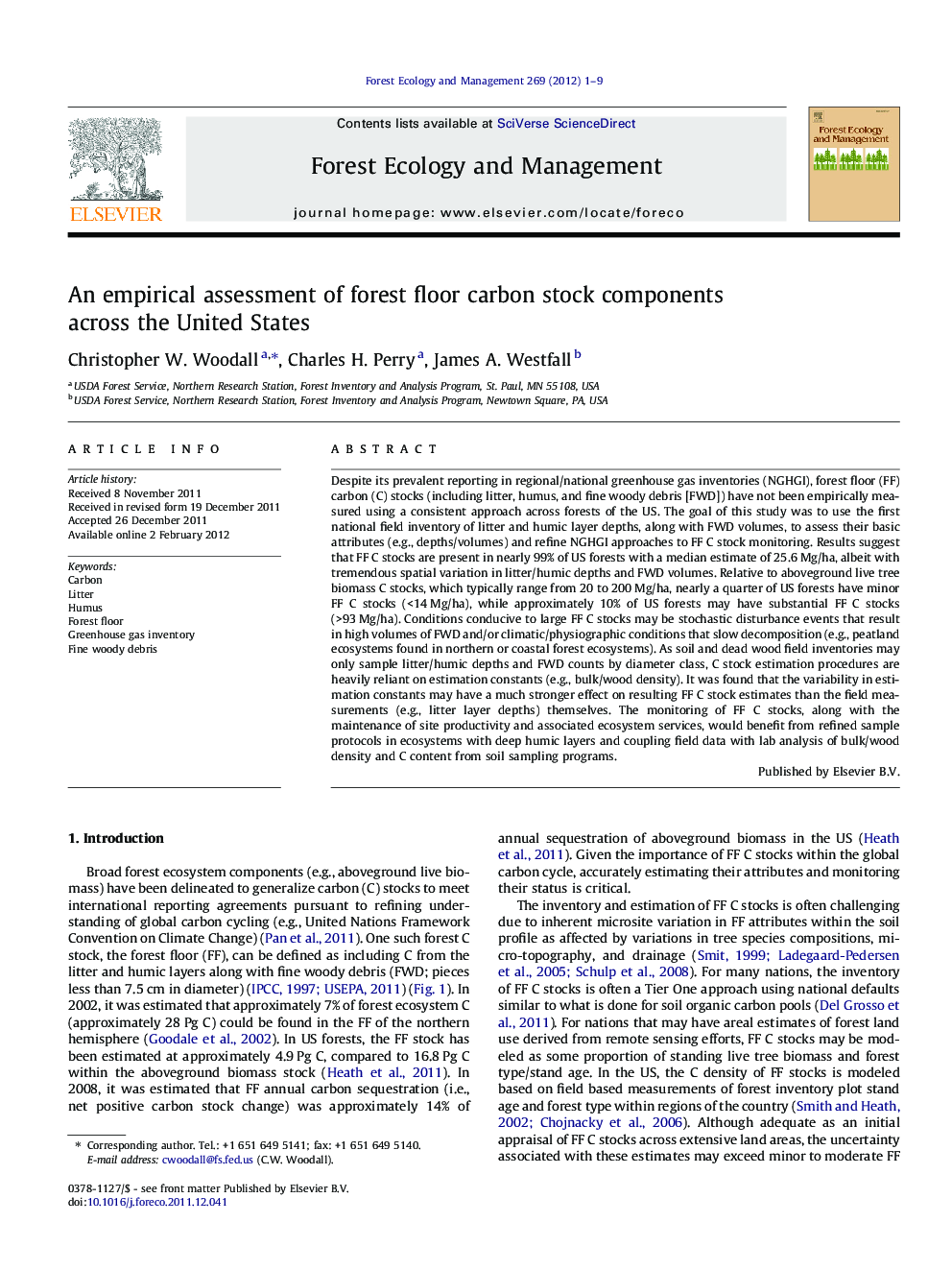| Article ID | Journal | Published Year | Pages | File Type |
|---|---|---|---|---|
| 87435 | Forest Ecology and Management | 2012 | 9 Pages |
Despite its prevalent reporting in regional/national greenhouse gas inventories (NGHGI), forest floor (FF) carbon (C) stocks (including litter, humus, and fine woody debris [FWD]) have not been empirically measured using a consistent approach across forests of the US. The goal of this study was to use the first national field inventory of litter and humic layer depths, along with FWD volumes, to assess their basic attributes (e.g., depths/volumes) and refine NGHGI approaches to FF C stock monitoring. Results suggest that FF C stocks are present in nearly 99% of US forests with a median estimate of 25.6 Mg/ha, albeit with tremendous spatial variation in litter/humic depths and FWD volumes. Relative to aboveground live tree biomass C stocks, which typically range from 20 to 200 Mg/ha, nearly a quarter of US forests have minor FF C stocks (<14 Mg/ha), while approximately 10% of US forests may have substantial FF C stocks (>93 Mg/ha). Conditions conducive to large FF C stocks may be stochastic disturbance events that result in high volumes of FWD and/or climatic/physiographic conditions that slow decomposition (e.g., peatland ecosystems found in northern or coastal forest ecosystems). As soil and dead wood field inventories may only sample litter/humic depths and FWD counts by diameter class, C stock estimation procedures are heavily reliant on estimation constants (e.g., bulk/wood density). It was found that the variability in estimation constants may have a much stronger effect on resulting FF C stock estimates than the field measurements (e.g., litter layer depths) themselves. The monitoring of FF C stocks, along with the maintenance of site productivity and associated ecosystem services, would benefit from refined sample protocols in ecosystems with deep humic layers and coupling field data with lab analysis of bulk/wood density and C content from soil sampling programs.
► Forest floor carbon stocks were a minority of (<25%) of total stocks. ► Large inter- and intra-plot variation of forest floor measurements across the US. ► Disturbance events and decay processes may drive forest floor carbon dynamics. ► Many ways to improve forest floor monitoring (e.g., wood/bulk density research).
